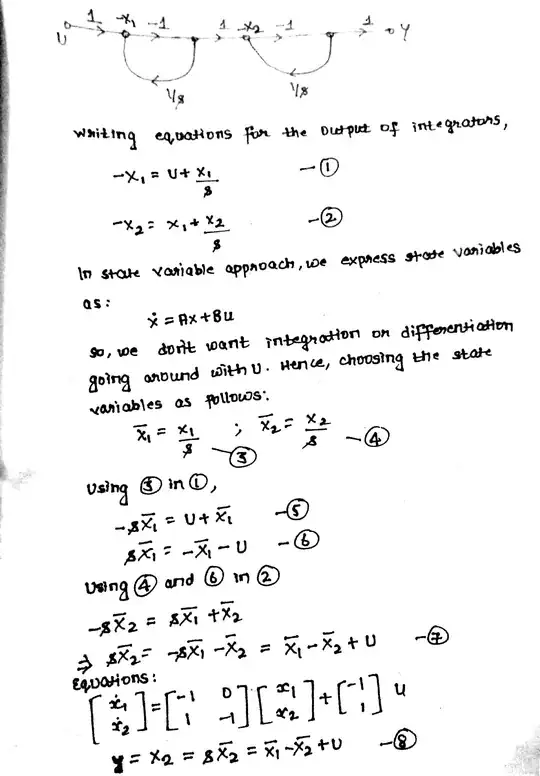How to find the state-variable equations, i.e, the state equation & the output equation for the system described by the signal flow graph below?

How to find the state-variable equations, i.e, the state equation & the output equation for the system described by the signal flow graph below?

Though the question was asked three years ago but i think the solution might be a bit of help for anyone trying to solve state space equations problems.
The most important concept to keep in mind in such types of problems is that the output of the integrator is taken to be the state variable.
The solution goes as follows:

As one can see, to start with the outputs of the integrator was taken to be the state variable and just to keep the state equations in their generalized form, we made slight change in the state variable, i.e. a multiplication factor of 1/s else the equation would have a component involving sU which would certainly not fall in line with the generalized state space equations.
Between each point you have to define a state-variable and it will give you this equations:
$$ \begin{align} & X_1 = U \\ & X_2 = -X_1 \\ & X_1(point)=X_2 \\ & X_2 = -X_1 \\ & X_2(point) = X_3 \\ & X_3 = -X_2 \\ & X_3(point) = -X_3 \\ & Y = X_3 \\ \end{align} $$
$$ X(point) = \begin{bmatrix}0 & 1 & 0 \\ 0 & 0 & 1 \\ 0 & 0 & -1\end{bmatrix}*X \\ Y= \begin{bmatrix}0 & 0 & 1\end{bmatrix}X $$ For example you have \$ X_3 (t) = C_0 \cdot ^{(-t)} \$ (if you solve this equation).
x points?, do you have a reference to a similar example?, or links to resources for obtaining the transition function given a SFG?
– Tristian
May 06 '15 at 16:25